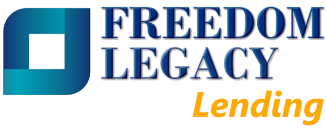

Down payment plus borrowed funds equal purchase price
“A down payment is money you pay that isn’t financed through a mortgage,” says attorney William Walzer. “It is typically paid at closing to the home seller.”
Together with the home loan, the down payment equals the total sales price for the home being bought. Say your home’s sales price is $300,000. If your required down payment is $60,000, you’ll need to borrow $240,000 ($300,000-$60,000).
“The buyer will provide the down payment amount to the settlement agent or closing attorney a few days before the closing date,” says Carlos Miramontez with Orange County’s Credit Union.
Down payment facts
A recent National Association of Realtors survey found some surprising results:
- Most buyers don’t put 20 percent down on their home
- The average down payment is 10 percent
- The average down payment by first-time buyers is 5 percent
- Personal savings is the main down payment source for 59 percent of buyers
- 43 percent of buyers saved for their down payment for six months or less
There are mortgage programs for all types of down payments.
How much down payment do you need for a house?
The down payment amount you must pay depends on the loan you get. Fannie Mae and Freddie Mac offer loans with down payment requirements as low as 3 percent. In general, the less you put down, the pickier conventional (non-government) lenders become about the rest of your credit and income.
Benjamin Feldman with Unison Home Ownership Investors explains, “That’s because the loan carries greater risk of default as the down payment gets smaller. Because of this risk, buyers must usually pay private mortgage insurance (PMI) if the down payment is below 20 percent.”
There’s good news: three types of loans require little-to-no down payment:
- Federal Housing Administration (FHA) loan (minimum 3.5 percent)
- Veterans Administration (VA) loan (minimum zero percent)
- United States Department of Agriculture (USDA) loan (minimum zero percent)
Complete guide to VA home loans
These government programs do require some form of insurance as well. For FHA and USDA loans, it’s MIP (mortgage insurance premium), For VA home loans, it’s a funding fee. You can usually add those charges to your loan amount.
How much should you put down?
The question of how much down payment do you need for a house really depends on other factors in your application. If your credit is perfect, your income is solid, and you have little debt, you can pay less.
For instance, FHA allows a 3.5 percent down payment if your credit score is at least 580 (and everything else is perfect with a score that low), but requires at least 10 percent down if your FICO score is between 500 and 579 (and everything else had still better be perfect because 500 is a very low score).
There is free money available: complete guide to down payment assistance in the USA
Just because you can buy with little or no money down doesn’t mean you should.
“When you put more money down, it means you’ll start off with more equity in your home. That means you’ll have lower payments, too,” says Feldman. In addition, mortgage insurance costs less if you make a larger down payment, also reducing your monthly costs.
But you might be better off buying sooner with less money down. Do you qualify for a low or no down payment loan? Then you may want to buy sooner. That’s because housing prices and interest rates may go up the longer you wait. And you don’t want to clean out your emergency savings for your down payment.
“A year from now, a home you’re considering buying may cost more. And it may require a larger loan amount at a higher interest rate,” says Miramontez.
Down payment savings steps
To help you reach the finish line and save enough for a down payment, follow these tips:
- Do the math. “Learn how much down payment your loan requires. And find out how quickly you’ll need to save to meet your goals,” Miramontez says.
- Create a realistic monthly budget. “Include a certain amount you need to save for the down payment fund every month,” Feldman says.
- Reduce or eliminate unnecessary costs. “Any amount you save can help. Maybe it’s six dollars per day by biking to work instead of taking the subway,” Walzer says.
- Make savings automatic. “Set up automatic transfers from your checking account to a savings account,” says Miramontez. “Place savings transfers on autopilot. This way, you can set it and forget it without having to remember to do it manually.”
- Search for aid. “Research local government grants and down payment assistance programs. See if you are eligible. Many states and cities have programs to help their citizens buy a home,” says Feldman.
Saving for a down payment also lets you “practice” for homeownership. For instance, if your rent is $1,000 a month, and your new mortgage with taxes and insurance would be $1,500 a month, spend a few months adding $500 a month to your savings and see if your lifestyle can take the hit. Or pay off enough debt to reduce other payments by $500.
Can’t save for a down payment? Your employer may be able to help
You’ll get used to spending less on other things, or you’ll find out the easy way that it won’t work. (Finding out via foreclosure is the hard way.)
In any event, the size of your down payment is a personal decision. Run the numbers, practice the payments, and make the best decision for your own goals.
